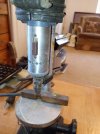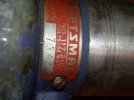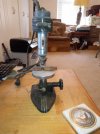- Joined
- Apr 19, 2021
- Messages
- 229
Hey all, just recieved a 8" drill press with a chuck that is stated to handle bits as small as 1.5mm. I also purchased a keyless chuck which is probably 3 times heavier, rated to as small as 1/64". Im planning on just making scales for folders. So my question is which chuck should I install? Also I've seen small bits with shouldered shanks that wouldn't require such a small chuck, which type of bits do you recommend and what speeds do you usually turn your bits through micarta and G10? thanks for helping a newb






